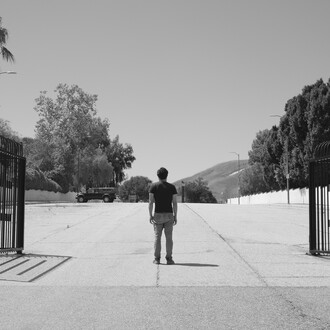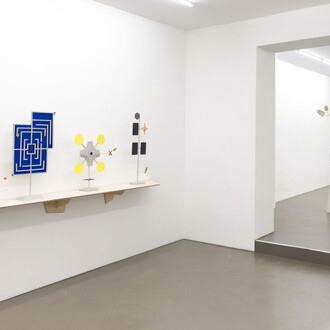Into the present day, artists have continued to engage with the visual language of the avant-garde perspectives and functionalism of the Bauhaus. The exhibition A Bauhaus Project by Kicken Berlin in cooperation with Mehdi Chouakri and Ulrich Fiedler galleries celebrates the centennial of the groundbreaking school by bringing together historic works of Bauhaus modernism with current-day abstractions.
The Bauhaus in Weimar, Dessau, and Berlin was the most significant modernist art school and a hub for the European avant-garde. Bauhaus masters and students alike – Walter Gropius, Wassily Kandinsky, Hannes Meyer, László Moholy-Nagy and Lucia Moholy and Erich Consemüller, T. Lux Feininger, Grit Kallin-Fischer, and Heinz Loew – shaped the workshop of modernism.
Contemporary artists such as Saâdane Afif, John Armleder, Sylvie Fleury, Mathieu Mercier, Gerwald Rockenschaub, and Luca Trevisani work with modernism’s now classic visual language but approach it from different conceptual vantage points. Abstract shapes merge with everyday objects, space and material become laden with meaning. In their highly reflective creation, the works bear the marks of the various artistic processes of the modern, be it minimalism or conceptualism, both of which have their roots in the Bauhaus.
The fundamental training of the so-called Vorkurs (or preliminary course), taught by Johannes Itten, László Moholy-Nagy, and Josef Albers, was essential to understanding the universal approach of Bauhaus tenets. Natural and material studies, as well as lessons in color, shape, and contrast, statics, dynamism, and balance were examined by Hannes Meyer, László Moholy-Nagy, Walter Peterhans, Erich Consemüller, Kurt Kranz, and Hajo Rose, among others. Dynamic top views visualized these practices as did translucent and sculptural objects, cubist architecture, and product design, from furniture to chessboards, to which examples from Galerie Ulrich Fiedler attest. Architecture as the result of plastic studies in space were, among other aspects, a focus at the Russian Vkhutemas School in Moscow, which was pursuing similar goals for artistic-technical education simultaneous with the Bauhaus.
In the rooms at Galerie Mehdi Chouakri on Mommsenstraße in Berlin, an active dialogue unfolds between the interwar modernism and the postmodern of the twenty-first century. In the works by Gerwald Rockenschaub, the visual language of geometric abstraction has been stripped of all individuality, though he manages a concise balance that keeps in mind the traditions of modernism. With his geometric sculptures, Saâdane Afif manages to span a complex web of relationships between high and popular art, from Man Ray to contemporary DJ-culture. His objects can be read on multiple levels. Mathieu Mercier stages the formal repertoire of modernism – one of his greatest paragons is Piet Mondrian – with current means, often everyday objects, that are simultaneously playful and elegant. Sylvie Fleury, on the other hand, looks at the showiness of today’s consumer and luxury goods, just as Umbo viewed them as surreal objects in the late 1920s. Luca Trevisani considers himself a researcher, who makes reality palpable through transformations of organic materials.
















